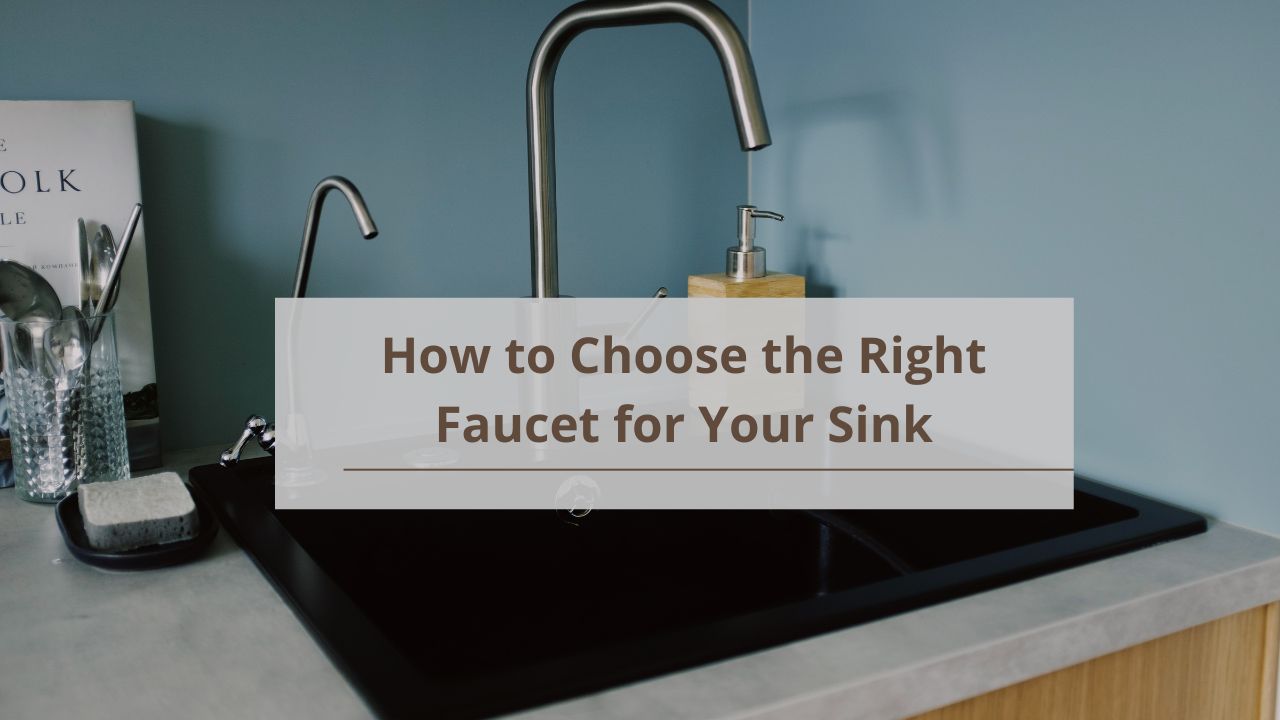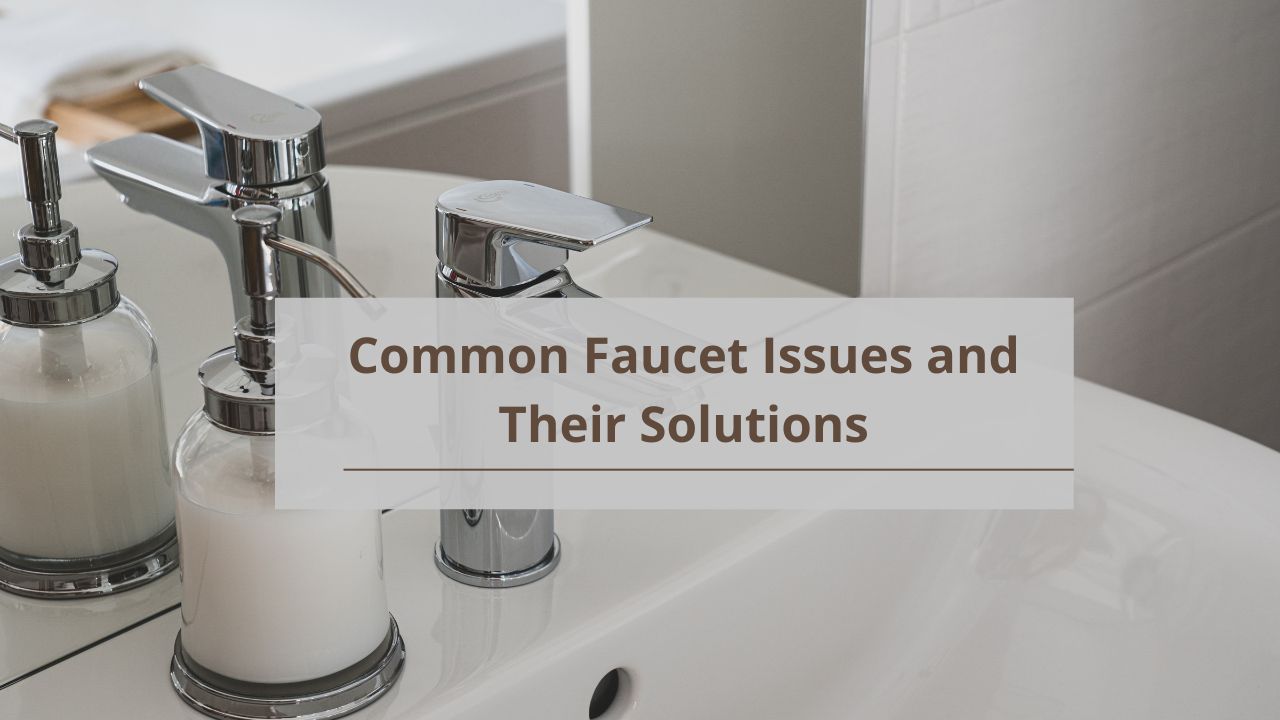Choosing the right faucet for your sink might seem like a small decision, but it can significantly impact both the functionality and appearance of your kitchen or bathroom. With so many styles, materials, and features available, it’s crucial to make an informed choice that meets your needs and enhances your space. This guide will walk you through everything you need to know to select the perfect faucet.
Understanding Faucet Types
There are several types of faucets to consider, each with its own set of features and benefits.
Single-Handle Faucets
Single-handle faucets are popular for their simplicity and ease of use. They allow you to control both the temperature and flow of water with one lever, making them ideal for busy kitchens and bathrooms.
Double-Handle Faucets
Double-handle faucets have separate controls for hot and cold water, providing more precise temperature adjustments. They are often chosen for their traditional look and classic design.
Pull-Out and Pull-Down Faucets
These faucets come with an extendable spray head, which can be pulled out or down for added convenience. They are great for tasks that require more reach, like washing large pots or cleaning the sink.
Wall-Mount Faucets
Wall-mount faucets are installed on the wall above the sink rather than on the sink itself. This design is both stylish and space-saving, ideal for modern or minimalist settings.
Touchless Faucets
Touchless faucets use motion sensors to turn the water on and off, offering a high level of convenience and hygiene. They are perfect for kitchens and bathrooms where you want to avoid touching the faucet handles.
Considerations for Sink Compatibility
Before purchasing a faucet, ensure it is compatible with your sink.
Sink Configuration
Check whether your sink is a single or double basin, and ensure the faucet you choose fits the configuration. Some faucets are designed specifically for certain sink styles.
Mounting Type
Faucets can be mounted on the sink, countertop, or wall. Verify the mounting type of your sink to ensure compatibility with the faucet.
Hole Configuration
Count the number of holes in your sink. Some faucets require one hole, while others may need three or more for installation. Make sure your sink has the right number of holes or consider using a deck plate to cover unused holes.
Material and Finish Options
Faucets come in various materials and finishes, each offering different benefits.
Brass
Brass faucets are known for their durability and resistance to corrosion. They often come with a variety of finishes and are a classic choice for many kitchens and bathrooms.
Stainless Steel
Stainless steel faucets are modern and sleek, known for their resistance to rust and stains. They are easy to clean and maintain.
Chrome
Chrome faucets are popular for their shiny, reflective surface. They are durable and easy to clean but can show water spots and fingerprints.
Oil-Rubbed Bronze
Oil-rubbed bronze faucets offer a rustic, antique look. They are less prone to showing water spots and fingerprints and are a good choice for traditional or vintage-inspired spaces.
Matte Black
Matte black faucets provide a contemporary, elegant look. They are less likely to show stains and are easy to match with other fixtures.
Style and Design
Choose a faucet style that complements the overall design of your space.
Traditional vs. Modern
Traditional faucets often feature ornate details and classic designs, while modern faucets have clean lines and minimalist features. Select a style that aligns with your home’s aesthetic.
Minimalist vs. Ornate
Minimalist faucets are sleek and simple, while ornate faucets include decorative elements. Your choice should reflect your personal style and the look you want to achieve.
Color Coordination
Ensure the faucet color matches or complements other elements in your space, such as cabinet hardware, countertops, and sink.
Functionality and Features
Consider the functional features that will enhance your daily use.
Water Flow Rate
Check the water flow rate of the faucet to ensure it meets your needs. Higher flow rates are better for tasks that require a lot of water, while lower flow rates can help conserve water.
Spray Options
Faucets with multiple spray options, such as stream, spray, and pause, offer greater versatility for different tasks.
Temperature Control
Consider how easily you can adjust the temperature with the faucet. Smooth, precise control is essential for comfort and convenience.
Ease of Use
Ensure the faucet is user-friendly, especially if it will be used frequently by family members or guests.
Installation and Maintenance
Decide whether you will install the faucet yourself or hire a professional.
DIY Installation vs. Professional Help
Installing a faucet yourself can save money, but ensure you have the necessary skills and tools. If you’re unsure, hiring a professional can ensure a proper installation.
Ease of Cleaning and Maintenance
Choose a faucet that is easy to clean and maintain. Smooth finishes and simple designs often require less upkeep.
Budget and Cost Considerations
Set a budget and choose a faucet that offers the best value within your price range.
Price Ranges
Faucets are available in a range of prices, from budget-friendly options to high-end models. Determine your budget and find a faucet that fits within it.
Cost vs. Value
Consider the long-term value of the faucet. Higher-quality faucets may have a higher initial cost but can offer better durability and performance.
Brand and Warranty
Choose reputable brands and understand the warranty offered.
Choosing Reliable Brands
Opt for brands known for quality and reliability. Research customer reviews and ratings to make an informed decision.
Understanding Warranties
Check the warranty details to ensure you are covered in case of defects or issues. A good warranty can provide peace of mind and protection for your investment.
Conclusion
Selecting the right faucet for your sink involves considering various factors, including type, material, style, and functionality. By understanding these aspects, you can make an informed decision that enhances both the performance and appearance of your sink. Choose a faucet that meets your needs, complements your space, and fits within your budget to ensure a satisfying and functional addition to your home.
FAQs
1. What is the difference between a single-handle and a double-handle faucet?
A single-handle faucet controls both the temperature and flow with one lever, while a double-handle faucet has separate controls for hot and cold water.
2. How do I know if a faucet will fit my sink?
Check the number of holes and the mounting type of your sink. Ensure the faucet you choose is compatible with these specifications.
3. What materials are best for faucets?
Brass and stainless steel are popular choices for their durability and resistance to corrosion. Chrome and oil-rubbed bronze are also common, each offering unique finishes.
4. Are touchless faucets worth the extra cost?
Touchless faucets offer convenience and enhanced hygiene, reducing the need to touch handles. They can be worth the investment if you value these features.
5. How do I maintain my faucet to ensure longevity?
Regularly clean the faucet, check for leaks, and ensure all parts are functioning properly. Follow the manufacturer’s maintenance recommendations for the best results


